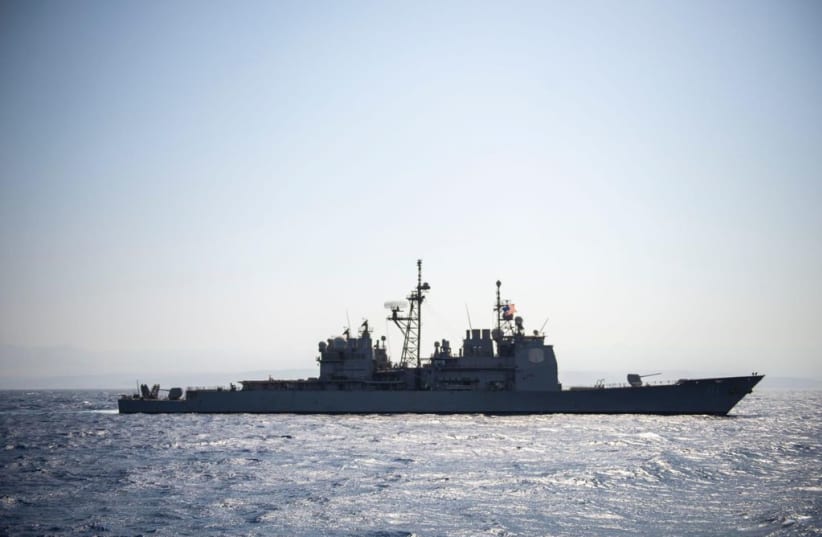The US Navy christened its latest Ghost Fleet Overlord unmanned surface vehicle, Mariner, during a small ceremony on Tuesday, putting the service on a path to ramp up autonomy experimentation with its fleet of USVs.
Mariner, which Gulf Craft built on spec under prime contractor Leidos, will help the Navy's advance testing for the autonomous technology needed for USVs.
It will also add to the wide array of commercial systems like sensors, satellite links, radars and communications suites – that the Navy is experimenting with across various designs of USVs.
The basic design of the Mariner is similar to other craft on the Gulf Coast used to support oil rigs and was halfway built when the Navy purchased it, according to Brian Fitzpatrick, the principal assistant program manager for USVs at the Naval Sea Systems Command’s unmanned maritime systems program office, or PMS 406.
The 194-foot-long Mariner is also equipped with datalinks and systems to function as a mothership for other USVs, making it easier for the Navy to now experiment with multiple unmanned craft at the same time.
“Besides this platform doing a lot of work in … allowing us to test and mature our system engineering pillars – which apply to no matter what we built, whether it’s [Large Unmanned Surface Vehicle] or MUSVs or something else – a lot of the basics here, the perception and the autonomy, the reliable machinery, almost all of that can cross over between those classes.
"The real differences are the size of the engines,” Rear Adm. Casey Moton, the program executive officer for unmanned and small combatants, told reporters on Tuesday.
“This baseline of what we’re doing first I want to say applies to whatever approach we go. In terms of requirements, LUSV is a program of record requirement, and the [vertical launch system] capability – adjunct magazine capability – is important. It’s in our request. That’s a big aim of what we’re developing,” he added.
Mariner also features the command and control portions of the Aegis combat system and can link to other Aegis ships in the fleet.
The Navy added a third electrical generator, on top of the two generators in the original design for redundancy and the aft part of the USV can fit containerized payloads.
Mariner will head to the West Coast to join the Navy’s other MUSVs under San Diego, Calif.,-based Unmanned Surface Vessel Division One in the Fiscal Year 2023.
Incorporating drone ships
The US Navy is looking to incorporate drone ships into naval taskforces, deploying alongside US Navy aircraft carriers in Pacific fleets.
"US Navy aircraft carriers may be deploying alongside unmanned vessels by 2027 or 2028, or earlier, if I can make it happen," Adm. Michael Gilday, the service's top officer, said in a statement in February.
Those drone warships "may not necessarily be completely unmanned," but that timeline would allow the Navy to "crawl-walk-run" and have those unmanned systems available "in large numbers" by the 2030s, Gilday said, pointing to the recently activated unmanned task force as a key part of that effort.
"We're doing sprints with this unmanned task force to challenge and sometimes fail so that we identify and know when we need to pivot and where we need to double down," Gilday told reporters in San Diego.
"We're doing sprints with this unmanned task force to challenge and sometimes fail so that we identify and know when we need to pivot and where we need to double down."
Adm. Michael Gilday
The Navy is speeding up the development of unmanned ships as an affordable way to keep up with China’s growing naval capabilities amid fears of repeating costly shipbuilding blunders from recent years.

